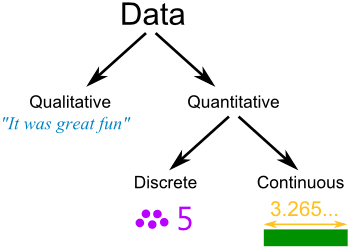

Invoking the length() function results in a Constant Expression, except when the variable is an unsized array that is the last member of a storage block.Īrrays can be accessed with arbitrary numeric expressions. The length of an array variable can be computed with the. With a few exceptions, arrays can be used for variables of all Storage Qualifier types: inputs, outputs, uniforms, constants, etc. In all cases, the array size must be a compile-time integral Constant Expression. An array in a shader storage interface block may be declared without a size, but only if it is the last variable in the block. Global variables can be declared without a size, but only if they are later redeclared with a size.
Basic data types in lists Patch#
Input arrays to Geometry, Tessellation Control, and Tessellation Evaluation Shaders do not need a size, nor do output arrays for non- patch outputs for Tessellation Control Shaders. First and foremost is that arrays cannot be multidimensional (unless OpenGL 4.3 or ARB_arrays_of_arrays is available, as shown below).Īrrays usually must be declared with a size which must be initialized with a Constant Expression. This generally works like in C/C++, but there are some limitations. Vector and matrix values are implicitly converted if the basic type they contain is implicitly convertible.īasic types can be grouped into sequences of those elements, called arrays. Either integer type can be converted into floats, and integers and floats can be converted into doubles. Signed integers can be implicitly converted to unsigned integers, but the reverse is not true. This means that an explicit construction operation is not necessary. length()).Ītomic variables represent a memory location within a Buffer Object upon which atomic operations can take place.Ĭertain values can be implicitly converted to certain types. Opaque types that are arrayed can use array-index and structure field selection (for. Non-array opaque types can only be passed to a function that takes this type as a parameter they cannot be used as any other part of an expression. This allows you to pass opaque types to user-defined functions. Opaque type variables can also be declared as in-qualified function parameters. They cannot be part of a buffer-backed interface block or an input/output variable, either directly or indirectly. They can be declared as members of a struct, but if so, then the struct can only be used to declare a uniform variable (or to declare a member of a struct/array that itself a uniform variable). Such variables can be arrays of the opaque type. They can be declared at global scope, as a uniform variables. Variables of opaque types can only be declared in one of two ways. These functions return/modify the actual referenced data.

As such, they can only be used as parameters to functions. Opaque variables do not have "values" in the same way as regular types they are markers that reference the real data. Opaque types represent some external object which the shader references in some fashion.


 0 kommentar(er)
0 kommentar(er)
